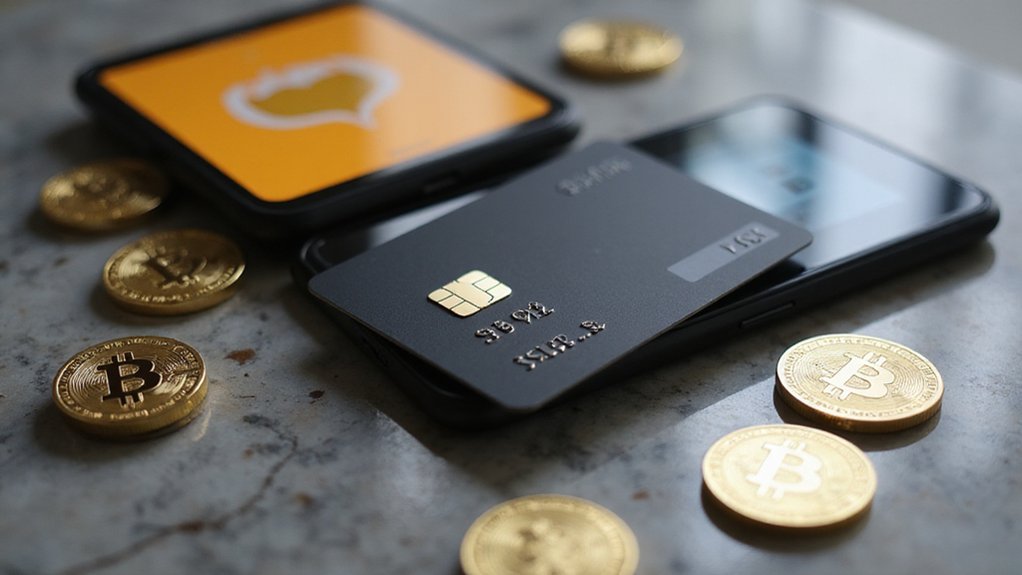The convergence of traditional credit card rewards with cryptocurrency has produced a curious breed of financial instrument that promises to transform mundane purchases into digital asset accumulation—though whether this represents genuine innovation or merely Silicon Valley’s latest attempt to gamify grocery shopping remains an open question.
The mechanics are straightforward enough: crypto credit cards like the Gemini Card and Coinbase One Card offer up to 4% back in digital assets, surpassing the typical 3% ceiling that has long constrained traditional rewards programs.
The arithmetic is compelling: 4% crypto rewards versus 3% traditional cashback—though whether that extra percentage justifies the volatility remains debatable.
The Coinbase One Card, launched in 2025 and powered by American Express, focuses exclusively on Bitcoin rewards, while Gemini’s offering supports Bitcoin plus over 50 alternative cryptocurrencies—a breadth that either reflects genuine consumer demand or the classic fintech tendency to mistake complexity for sophistication.
What distinguishes these products from their predecessors is their integration with established payment networks, ensuring that accumulating Bitcoin doesn’t require explaining blockchain technology to bemused cashiers. The use of existing payment rails represents a pragmatic acknowledgment that revolutionary financial products still need to function at CVS.
The fee structures remain surprisingly consumer-friendly, with most cards maintaining zero annual fees while minimizing foreign transaction costs. This approach suggests either genuine competitive pressure or the recognition that charging customers to beta-test your experimental payment product might hinder adoption.
Reward redemption and crypto conversion fees vary by issuer, though transparency in these structures has become a competitive necessity rather than mere courtesy. The mathematics remain unforgiving for those who carry balances, as interest rates ranging from 15% to 27% can quickly erode any crypto rewards earned through spending. Coinbase has demonstrated significant market traction with nearly one million subscribers to its premium service, suggesting substantial consumer appetite for crypto-integrated financial products.
Perhaps most tellingly, these cards serve as entry points for crypto novices seeking passive digital asset accumulation without the complexity of exchange accounts or wallet management. For those seeking additional crypto acquisition methods, learn and earn programs offered by major exchanges provide educational pathways to earning digital assets without spending money. The integration with mobile apps for real-time reward tracking and simplified onboarding processes reflects a maturation in the crypto space—or at least an understanding that mainstream adoption requires mainstream usability.
Whether crypto credit cards represent a genuine game-changer or simply another rewards gimmick wrapped in blockchain rhetoric depends largely on one’s perspective regarding cryptocurrency’s long-term viability. For now, they offer a relatively frictionless method of accumulating digital assets through everyday spending, assuming one considers that accumulation inherently valuable.









